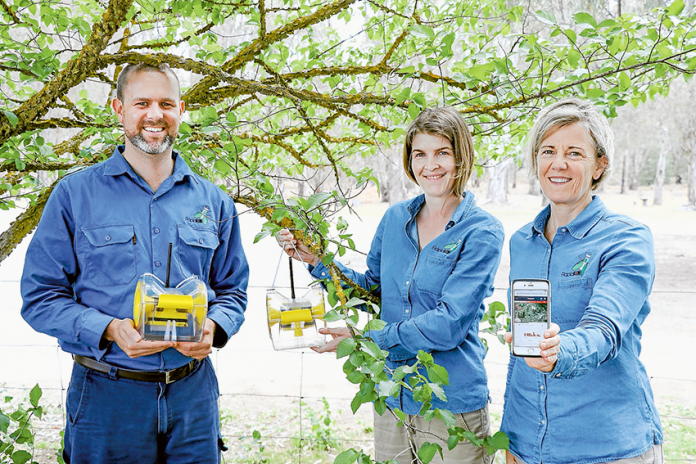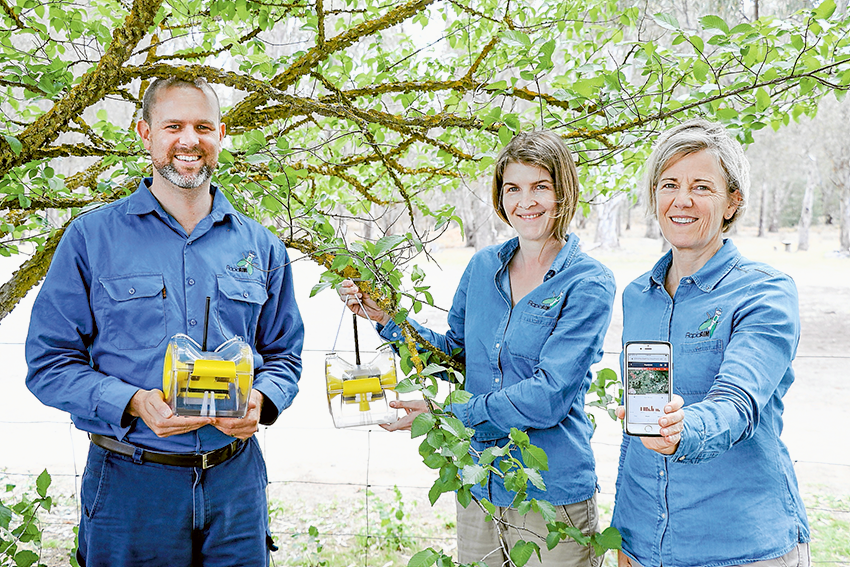

A NEW piece of technology to help detect the Queensland Fruit Fly (QFF) was rolled out across the Shepparton area last week, which is the brainchild of three former CSIRO scientists, Nancy Schellhorn, Laura Jones and Darren Moore.
This incredible new piece of technology, called RapidAIM, takes the guesswork out of finding areas affected by QFF by detecting the pest using sensors.
RapidAIM CEO, Nancy Schellhorn said, “Last year we carried out a trial in the Shepparton area and it was very successful so last week we set up 120 detectors across the east, north and west of Shepparton, which covers an area of 150km2.
“Pest management can be quite a challenge, so we wanted to create something that takes the guesswork out of detecting the pests. All insects have specific behaviours and that’s what we use to detect the fruit fly.
“They enter the trap and our algorithms sense that it is a fruit fly and that data is then sent wirelessly to an app on a smartphone for real time monitoring. The orchardist can then see what areas are affected by the fruit fly and act on it, and then can continue to monitor the area to see if the spraying has eradicated the pest. It also records the data, so you can see daily, weekly and monthly data streams. It allows for a more targeted approach.
“The Shepparton area is the largest fruit growing region so it is important to have this kind of technology available to ensure that the fruit industry remains strong.”





